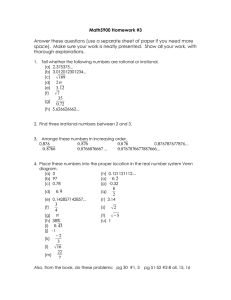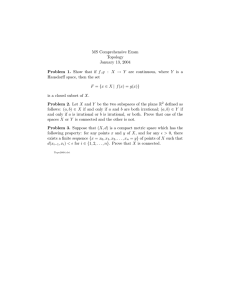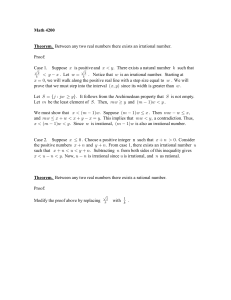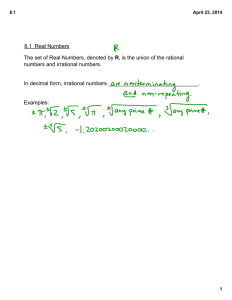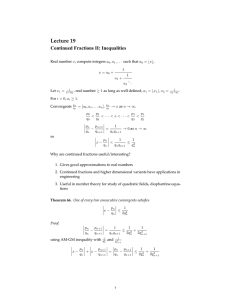Session 8: Factors, primes and irrationals
advertisement
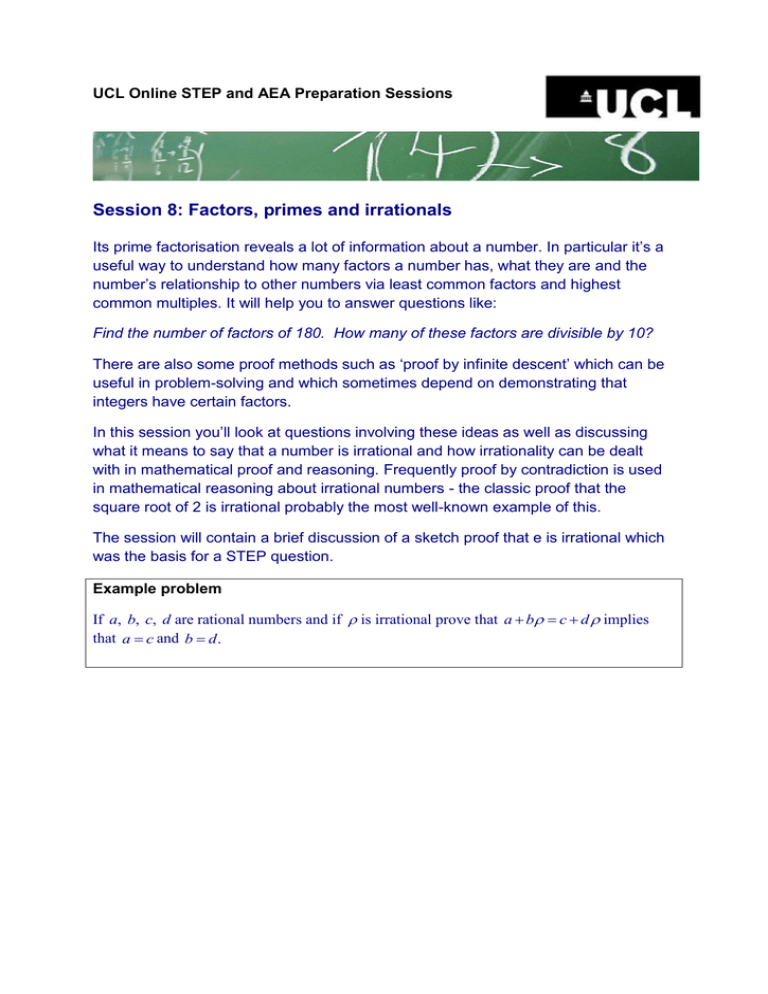
UCL Online STEP and AEA Preparation Sessions Session 8: Factors, primes and irrationals Its prime factorisation reveals a lot of information about a number. In particular it’s a useful way to understand how many factors a number has, what they are and the number’s relationship to other numbers via least common factors and highest common multiples. It will help you to answer questions like: Find the number of factors of 180. How many of these factors are divisible by 10? There are also some proof methods such as ‘proof by infinite descent’ which can be useful in problem-solving and which sometimes depend on demonstrating that integers have certain factors. In this session you’ll look at questions involving these ideas as well as discussing what it means to say that a number is irrational and how irrationality can be dealt with in mathematical proof and reasoning. Frequently proof by contradiction is used in mathematical reasoning about irrational numbers - the classic proof that the square root of 2 is irrational probably the most well-known example of this. The session will contain a brief discussion of a sketch proof that e is irrational which was the basis for a STEP question. Example problem If a, b, c, d are rational numbers and if is irrational prove that a b c d implies that a c and b d . Being able to use geometrical properties to deduce information about a figure is important. Solving geometrical problems can also require good diagrams experimenting by adding elements such as lines or circles to diagrams to reveal relationships using algebra alongside geometry where necessary In this diagram what is the sum of the four shaded angles? This problem is reasonably straightforward but in producing a solution it would be important to be clear about which geometric properties you are using at all times. Here is another example Find the angle between a space diagonal of a cube and one of its faces. It might not be immediately obvious that some standard techniques from A level Mathematics will enable this to be done relatively quickly. Example problem Show that the shortest distance from the point , to the line y mx c has the value m c m2 1 .
